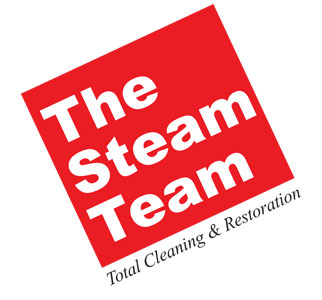Lakeway, Texas Water Damage Restoration: A Comprehensive Guide to Insurance Claims
/water damage restoration repair services lakeway, texas
Lakeway, Texas, known for its stunning landscapes and tranquil lakeside living, is not immune to the challenges posed by water damage. Whether caused by natural disasters, plumbing issues, or unforeseen accidents, water damage can be a daunting experience for homeowners. In such situations, understanding the intricacies of water damage restoration and the role of insurance claims becomes crucial for a seamless recovery process. In this comprehensive guide, we explore the specifics of water damage restoration in Lakeway and how insurance claims play a pivotal role in helping homeowners regain control after unforeseen water-related incidents.
The Nature of Water Damage in Lakeway:
Lakeway, with its proximity to Lake Travis and the Colorado River, faces unique challenges when it comes to water damage. While the picturesque setting enhances the appeal of the community, the risk of flooding during heavy rainfall or severe weather events is a reality that residents must contend with. Additionally, plumbing issues, such as burst pipes or leaky roofs, can contribute to water damage, emphasizing the need for prompt and effective restoration measures.
Understanding the Water Damage Restoration Process:
Assessment and Documentation: The first step in water damage restoration is a thorough assessment of the extent of the damage. Professionals examine affected areas, categorize the water damage, and document the details. This documentation is crucial for insurance claims and helps establish the scope of the restoration project.
Water Extraction: Swift water extraction is paramount to prevent further damage. Powerful pumps and vacuums are employed to remove standing water from the premises, minimizing the risk of structural damage and mold growth.
Drying and Dehumidification: Once the water is extracted, the focus shifts to drying out the affected areas. Industrial-grade dehumidifiers and high-powered fans are strategically placed to accelerate the drying process, ensuring that moisture is thoroughly eliminated.
Cleaning and Sanitization: Thorough cleaning and sanitization follow the drying process. This step involves disinfecting surfaces, removing contaminants, and ensuring that the affected spaces are safe for occupancy.
Restoration and Reconstruction: The final phase involves restoring the property to its pre-damaged state. This may include repairing structural damage, replacing damaged materials, and addressing any cosmetic issues.
Insurance Claims in Water Damage Restoration:
Contacting Your Insurance Provider: As soon as water damage occurs, homeowners should contact their insurance provider to initiate the claims process. Providing timely notification is crucial, as most insurance policies require prompt reporting of incidents.
Documenting the Damage: Thorough documentation of the damage is essential for a successful insurance claim. This includes photographs, videos, and a detailed inventory of the affected items. Professionals involved in the restoration process can provide valuable documentation to support your claim.
Understanding Policy Coverage: Homeowners should carefully review their insurance policy to understand the extent of coverage for water damage. Policies may vary, and some may include coverage for specific types of water damage, while others may require additional endorsements for comprehensive protection.
Coordinating with Restoration Professionals: Insurance companies often work closely with preferred restoration professionals or provide a list of approved contractors. Coordinating with these professionals can streamline the claims process, as they are experienced in working with insurance companies and understanding the documentation required.
Filing the Claim: The actual process of filing a claim involves submitting the necessary documentation, including a detailed description of the incident, evidence of the damage, and an estimate of the restoration costs. Filing the claim promptly and accurately is essential to expedite the reimbursement process.
Assessment and Adjusting: Once the claim is filed, an insurance adjuster will assess the damage and determine the appropriate settlement. It's important for homeowners to be present during the assessment to provide additional information and address any questions the adjuster may have.
Reimbursement and Restoration: Upon approval of the claim, homeowners receive reimbursement for the covered losses. These funds can then be used to initiate the water damage restoration process. Working with reputable restoration professionals ensures that the funds are utilized efficiently to restore the property.
Challenges and Considerations:
Policy Exclusions: Homeowners should be aware of any exclusions in their insurance policies. Certain types of water damage, such as flooding from external sources, may not be covered by standard policies and may require additional coverage.
Deductibles: Insurance claims often come with deductibles, which represent the amount homeowners are responsible for before the insurance coverage kicks in. Understanding the deductible and how it applies to the claim is crucial for financial planning.
Timely Reporting: Timeliness is critical in the insurance claims process. Delays in reporting the incident or filing the claim can complicate the process and may even lead to claim denials.
Working with Reputable Professionals: Insurance companies often have a network of preferred restoration professionals. However, homeowners have the right to choose their own contractors. It's essential to work with reputable and licensed professionals to ensure quality restoration work.
Conclusion:
Water damage restoration in Lakeway, Texas, is a multifaceted process that demands a coordinated effort between homeowners, restoration professionals, and insurance providers. By understanding the nature of water damage in the region, the restoration process, and the intricacies of insurance claims, homeowners can navigate these challenges with confidence. In times of distress, a well-executed restoration plan supported by a comprehensive insurance claim can pave the way for a swift recovery and the restoration of homes to their former glory in the serene lakeside community of Lakeway.






